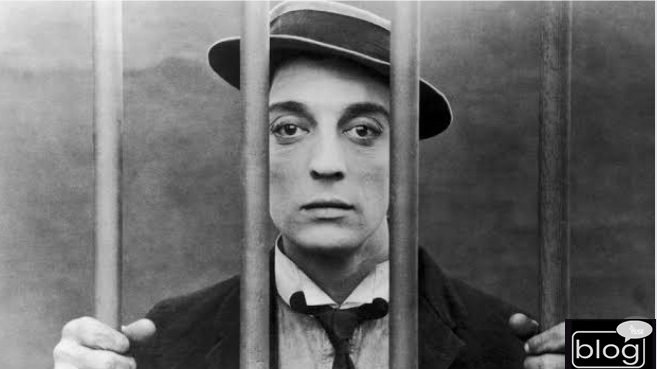“A comedian does funny things. A good comedian does things funny.“-Buster kleaton.
Charlie Chaplin is a prominent figure in the realm of silent films and is widely known for delivering high-quality comedy. But there was a Contemporary figure beside Charlie Chaplin whose name was Buster Keaton, a man made visual comedy by putting Himself in risky situations with a deadpan expression. Buster kleaton was not only a comedian at the same time an acrobat, director and special effects innovator. His unique blending of physicality and deadpan humor, his acrobatic stunt and his incredible sense of timing set him apart from his contemporaries, earning him the admiration from audiences and critics alike. In the 1920s, child the vaudeville star turned filmmaker had a prolific run that made him the greatest actor-director in film history.
Early Days and Vaudeville Roots
Joseph Frank Keaton IV was born on October 4, 1895, in Piqua, Kansas. Buster’s parents, Joseph and Myra, were comedic performers in a traveling vaudeville show. The son of vaudevillians, Keaton is said to have earned his famous nickname when, at age 18 months, he fell down a staircase; magician Harry Houdini picked up the unhurt infant, turned to the boy’s parents, and chuckled “That’s some ‘buster’ your baby took.” Keaton’s popularity waned as talkies arrived in the late 1920s.In 1917, when he was 21 years old, Buster began transitioning into silent films, making his first onscreen appearance in The Butcher Boy with Fatty Arbuckle. The collaboration paved the way for his successful journey resulting in his way of silent film. In the 1940s and 1950s, Keaton made a comeback in feature films and TV shows, earning accolades such as an honorary Oscar in 1959.
Silent Film Triumph
He went on to act in 20 of Arbuckle’s films, with an interruption to serve in World War I, where he lost hearing in one ear. Keaton got his next big break in 1920, when an impressed studio executive, Joseph Schenck, gave him his own production unit. Keaton’s silent film were produced from the 1920 to 1929 era. Our Hospitality (1923) , Sherlock Jr(1924), Seven chances(1925),The General (1926),College(1927), and Steamboat Bill jr (1928) were some of his significant comedy masterpieces. “The General” and “Sherlock Jr.“ are regarded as timeless gems of silent cinema. In the 1940s and 1950s, Keaton made a comeback in feature films and TV shows, earning accolades such as an honorary Oscar in 1959.
The Rise and Fall
Keaton’s cinematic rules, including never faking a gag and refusing to use stuntmen, were key contributors to his success. His ingenuity with the camera, coupled with a fearless approach to performing his stunts, set him apart. Even without completed scripts, he trusted his artistic vision, famously stating, “The middle will take care of itself.
“One of the notable setbacks in his career was his departure from the independent film scene and confining himself in working conditions of studio system MSM. This change limited his artistic creation and freedom. This decision, he said, was “the worst mistake of my life.” Despite early success with films like “The Cameraman” (1928), Keaton found himself clashing with the studio’s rigid production methods. The departure from his improvisational and experimental approach marked a decline in the energy and innovation seen in his earlier works.
Legacy and Influences:
Buster Keaton’s impact extended far beyond his lifetime. In 1966, he died from lung cancer. Keaton was considered among the greatest silent-era comedians along with Harold Lloyd and Charlie Chaplin. Many filmmakers, from Mel Brooks to Jackie Chan, have been influenced by Keaton’s unique comedic style even today. Even in many popular Hollywood movies like Inception and Mission Impossible Six, you only live twice reprised his commendable stunt, gag, slapstick humor and scenes. His influence continues to reverberate through the corridors of Hollywood, reminding us that true artistry and humor withstand the test of time.
In conclusion, His inspiring true life story made a reminder that life with determination and resilience holds powerful human spirits. His early obstacles to personal hardship and artistic endeavors portrayed an enduring impact of a man who triumphed through struggle. From vaudeville roots to silent film triumphs, and even through the challenges of the studio system, Keaton’s journey inspires us to persevere and triumph through life’s struggles. The enduring impact of this comedic genius will continue to remind us that true artistry and determination can withstand the test of time.
For more blogs , click here !
Writer ,
Srabanti Chakma
Intern,
Content Writing Department
YSSE

